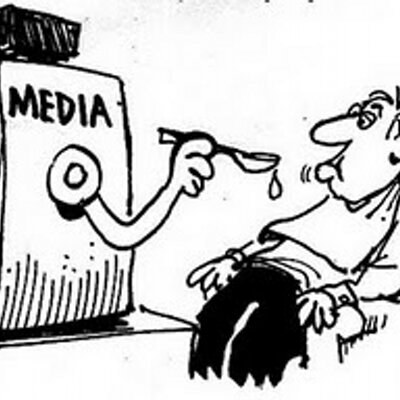Understanding gender is, in my opinion, a crucial part of understanding the Score and Maybelline advertising campaigns as the idea of gender is the main selling point in both ads, even though they are presented and used in different ways.
In the case of the Score advertising campaign, I can tell that it was heavily influenced by “The Male Gaze”, a theory developed by Laura Mulvey in which she theorises about how quite often in the media women are perceived as a sexual object who is there to provide pleasure to the male heterosexual viewer. “In a world ordered by sexual imbalance, pleasure in looking has been split between active/male and passive/female. The determining male gaze projects its phantasy on to the female form which is styled accordingly.” is what she says in her book Visual and Other Pleasure and is essentially the whole base of the score advert. In an advert where the underlining message is that if you (male) use this product you will be more attractive to females- if you don’t understand this concept and also the traditional idea of gender (male & female) then the advert will lack in meaning. This ad is also a good examples of Judith’s theory on “Raunch culture” which “Is the sexualised performance of women in the media that can play into male stereotypes of women as high sexually available. If you are also unable to understand the ideas of gender more specifically male, female and heterosexual attraction then this specific advert will become meaningless. This specific example is one portraying a traditional belief of patriarchy by showing a male being pampered by females in a borderline sexual way while they wear very little clothes, gaze inventively at the male, reach up towards him and just generally cohere to the male gaze. This shows how Score is using gender/ sexuality to attract customers and gain sales but this is also just a common tactic which has been taken advantage of by most major companies.
Understanding gender is also a crucial part of Maybelline’s “Boss Up” adverts as their selling point of the product is that they have included a gay male in a makeup advertisement for the first time. Manny’s sexuality is greatly exaggerated, along with his “cringe” vocabulary which I think represents the makeup brand Maybelline trying to make an impactful advert that you will remember, even if its remembered for being tacky and cringe the point will still be there”. Not only does this advert represent inclusion of different sexuality’s, it also represents inclusion of different genders and races too. For example in the original Maybelline boss up advert a man is “bossed” up as well between shots whereas in the second advert it is a woman. This is Maybelline’s attempt at breaking down the dominant ideology that makeup is only for females- which could either be perceived as a step towards a more inclusive society or just a smart marketing tactic to increase their target audience. By making adverts such as these Maybelline is moving away from ideas such as Laura Mulvey’s theory that “gender is fixed – male/female” and “it is structured by institutions and those powerful individuals who are able to exert power and control” and towards the more modern ideas such as Judith Butlers thoughts on how “gender is fluid, changeable, plural a set of categories to be played out and performed by individual subjects in individual moments in time and space.” which is displayed in the advert through Manny’s character being against the typical makeup user’s stereotype- such as Judith Butler’s so called “Girly Girls,” which could be described as “a female who chooses to display themselves in a more traditionally feminine way i.e. pink clothes, makeup, dresses gossiping, etc,”. The fact that Maybelline has Manny as their first male representative (who is also gay), shows that slowly society is moving further and further away from the outdated expectation that “The roles that men and women are expected to fulfil are tightly regulated and heavily moderated by social customs, family expectations, and rigid social codes” and more towards that of Judith Butlers where “Our genders are formed culturally rather than naturally” and “Our genders are not stable but are constructed through repeated actions.”.
Overall the idea of gender is represented differently on both the Score and Maybelline adverts but like I said before this idea of gender being the defining feature and selling point for both products will be completely missed if the viewer doesn’t understand the concepts and theory’s such as Judith Butler‘s idea that “an identity instituted through a stylized repetition of acts”. in other words, it is something learnt through repeated performance.” then the advertisement will not have the same effect. Both adverts also use gender in different ways to get to the viewer; for example score uses the more outdated “standard” that males should attract females and Maybelline uses Manny who is homosexual to enforce that while gender used to be a set of specific behaviours and characteristics that everyone of the same physical gender should follow- they are now no longer “Tightly regulated and heavily moderated by social customs, family expectations, and rigid social codes” as Gauntlett says but are more fluid and known that “Biological anatomies do not determine our gender” as Butler states. Judith states “Our genders are formed culturally rather than naturally” and “Our genders are not stable but are constructed through repeated actions.” and this is what is being shown through these contrasting adverts.



